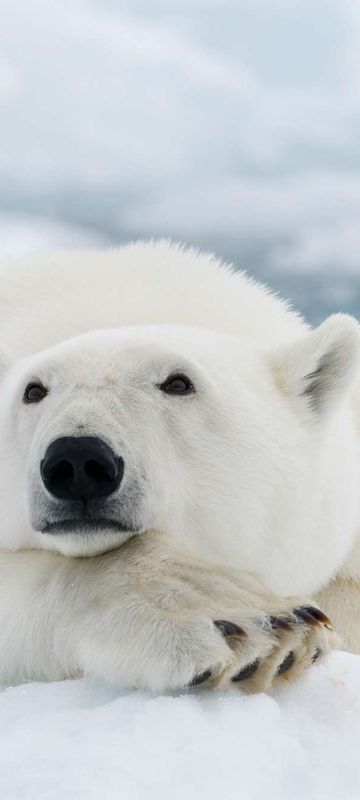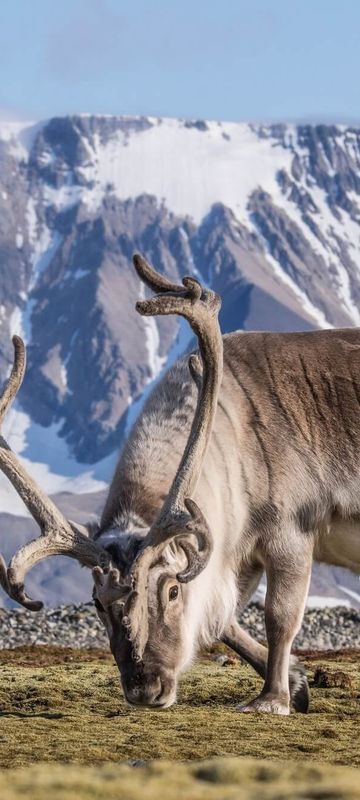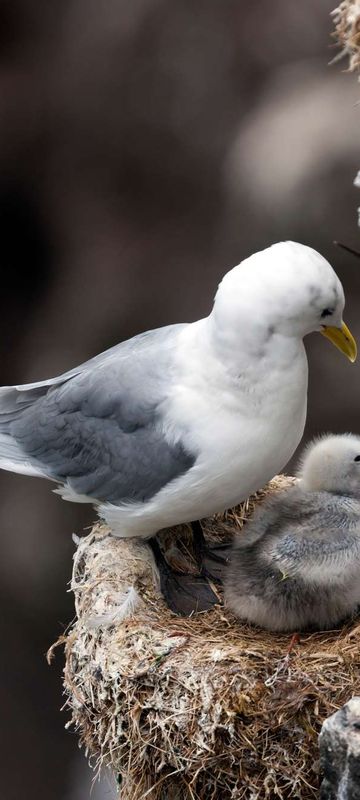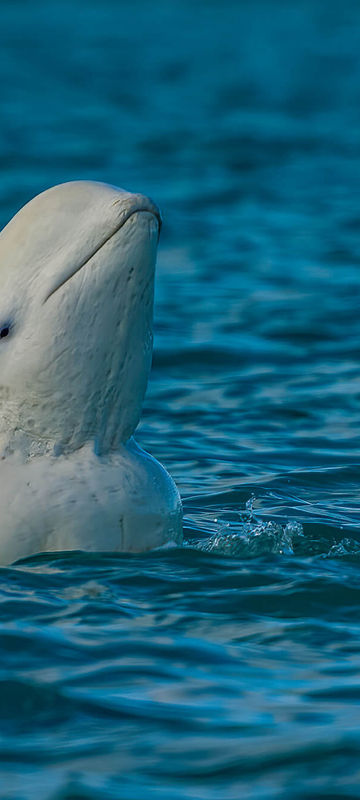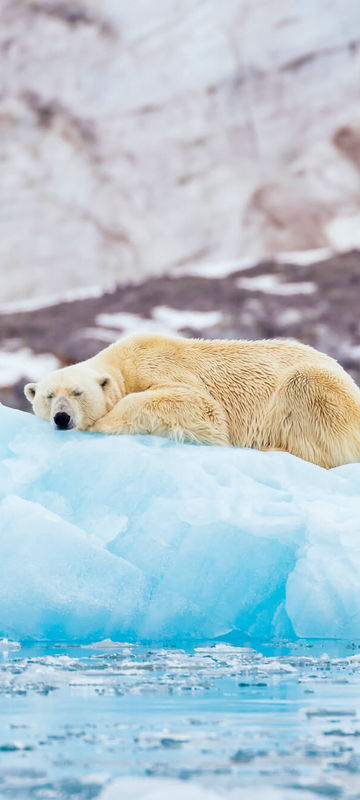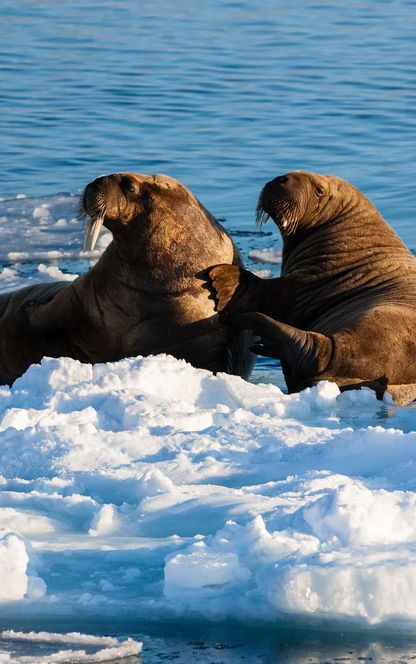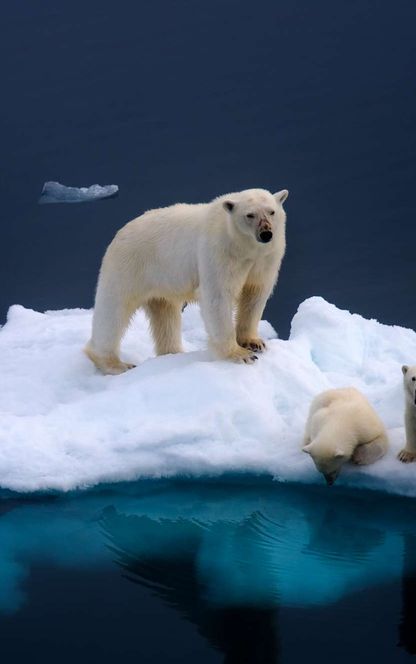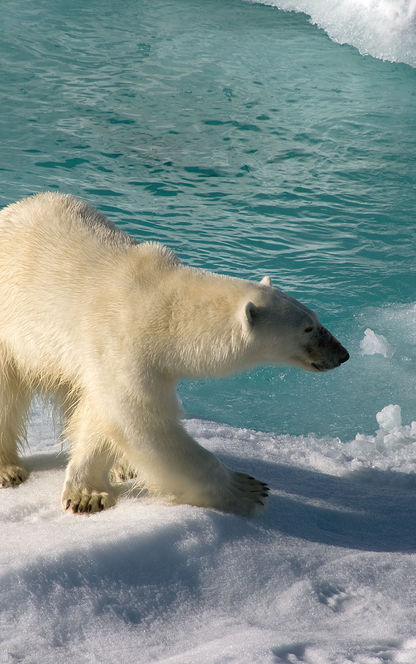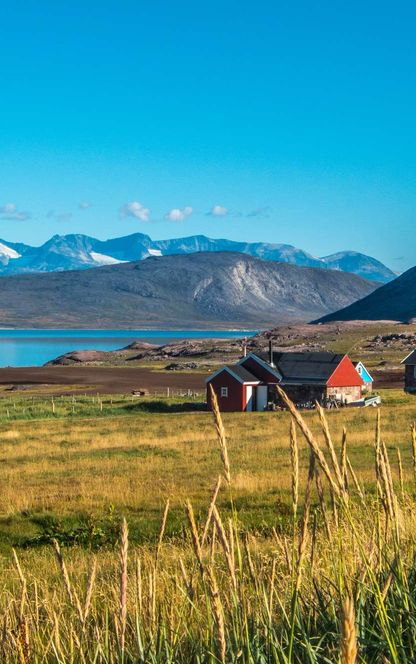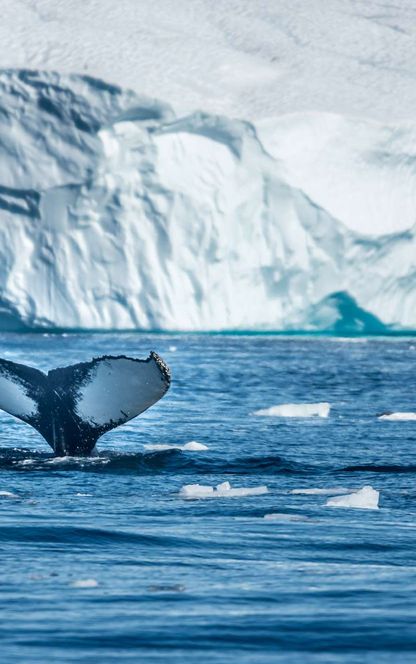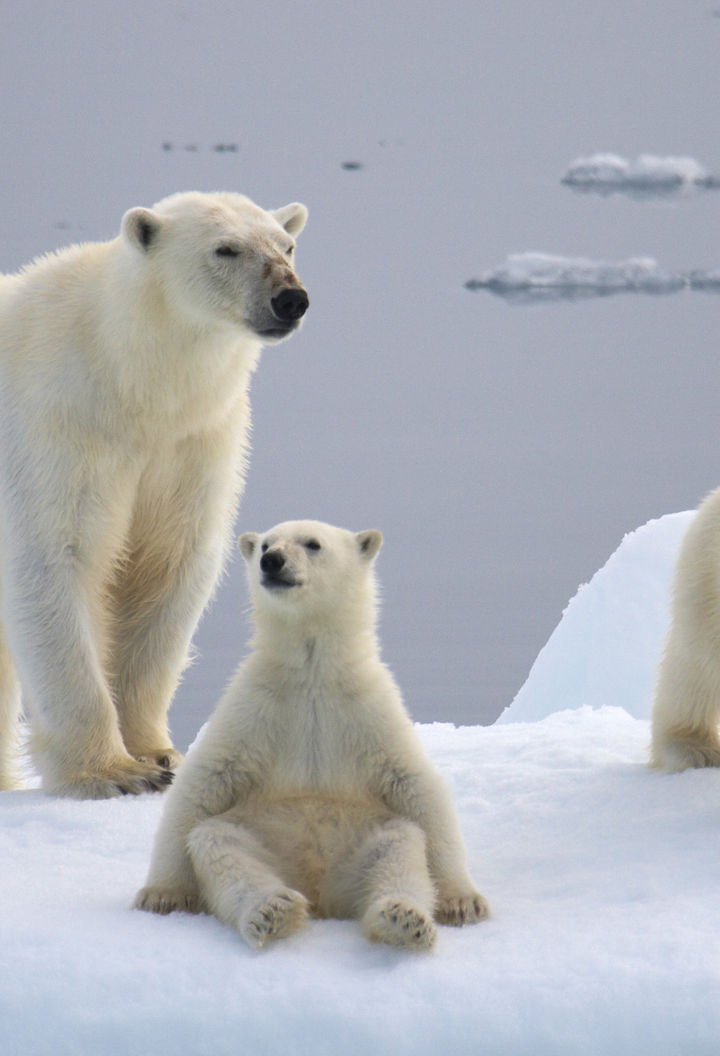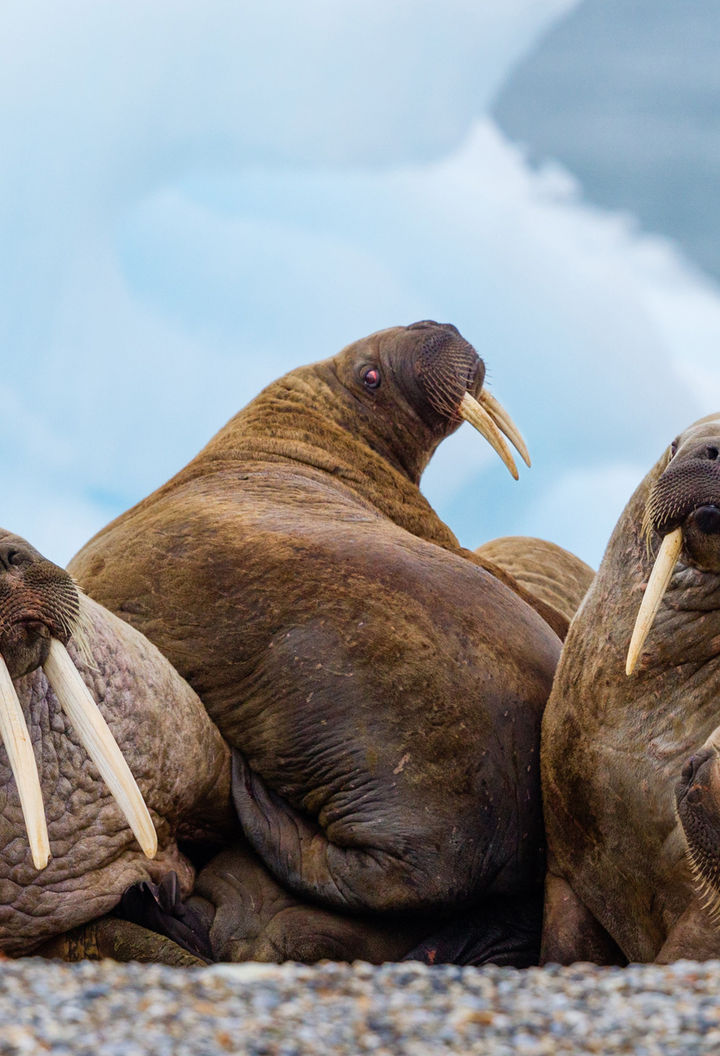Polar bears and land mammals
Most visitors to the region will hope to see the very symbol of the Arctic, the polar bear, which is as at home in the sea as on land, preying on a variety of sea mammals and scavenging on whatever else is available. Now protected throughout much of their range, these majestic predators and their cubs are readily seen in many parts of around Spitsbergen as well as northern Canada, notably Churchill, and Greenland.
Another opportunist equally at home here is the Arctic fox, which feasts on eggs and chicks, often patrolling the base of the bird cliffs, awaiting a free meal. Arctic hares and lemmings graze the fragile tundra along with musk oxen and reindeer. A small population of wolves inhabits northeast Greenland but it is in Arctic Canada that they are in their element. Elusive and very shy, they are one of the more difficult mammals to observe in the wild.
Did you know?
Polar bear fur is actually colourless. Each hair is actually a hollow translucent tube, which reflects the light, thus giving the yellowish white appearance. Their skin is black.
























